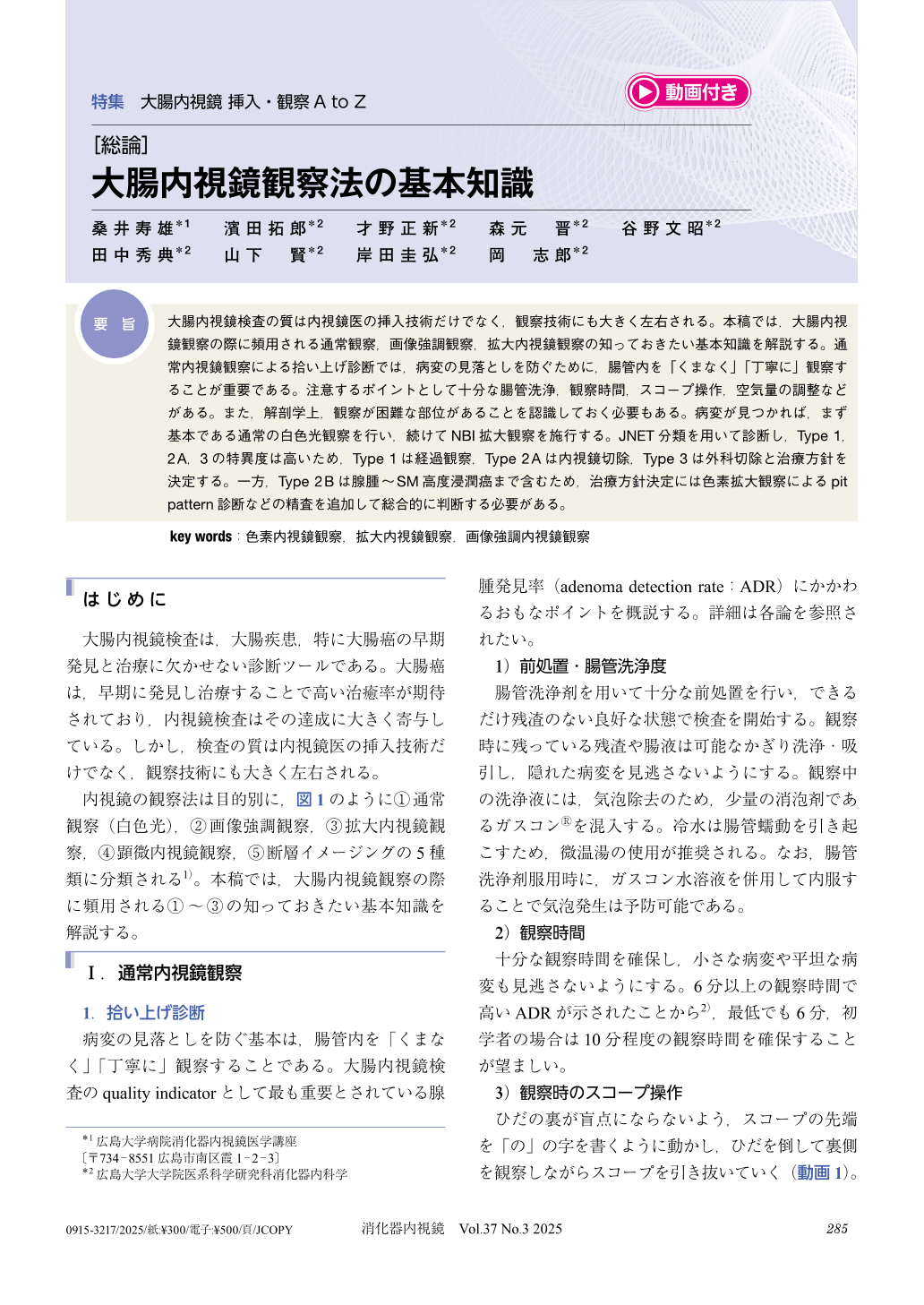Japanese
English
- 有料閲覧
- Abstract 文献概要
- 1ページ目 Look Inside
- 参考文献 Reference
要旨
大腸内視鏡検査の質は内視鏡医の挿入技術だけでなく,観察技術にも大きく左右される。本稿では,大腸内視鏡観察の際に頻用される通常観察,画像強調観察,拡大内視鏡観察の知っておきたい基本知識を解説する。通常内視鏡観察による拾い上げ診断では,病変の見落としを防ぐために,腸管内を「くまなく」「丁寧に」観察することが重要である。注意するポイントとして十分な腸管洗浄,観察時間,スコープ操作,空気量の調整などがある。また,解剖学上,観察が困難な部位があることを認識しておく必要もある。病変が見つかれば,まず基本である通常の白色光観察を行い,続けてNBI拡大観察を施行する。JNET分類を用いて診断し,Type 1,2A,3の特異度は高いため,Type 1は経過観察,Type 2Aは内視鏡切除,Type 3は外科切除と治療方針を決定する。一方,Type 2Bは腺腫〜SM高度浸潤癌まで含むため,治療方針決定には色素拡大観察によるpit pattern診断などの精査を追加して総合的に判断する必要がある。
The quality of colonoscopy depends not only on the insertion technique of the endoscopist but also on the observation technique. This article outlines the essential knowledge needed to understand conventional, image-enhanced, and magnified colonoscopy.During conventional endoscopic observation for lesion detection, careful and thorough examination of the intestinal tract is crucial to avoid missing lesions. Key factors include adequate bowel cleansing, sufficient observation time, proper scope manipulation, and appropriate adjustment of insufflation volume. Certain anatomical areas may be more challenging to observe and should receive particular attention.Once a lesion is identified, initial observation is performed using conventional white light, followed by NBI magnification. Diagnosis is based on the JNET classification, where types 1, 2A, and 3 demonstrate high specificity. Treatment plans are determined accordingly: follow-up for type 1, endoscopic resection for type 2A, and surgical resection for type 3. Conversely, type 2B includes adenoma to SM deep invasive carcinoma, requiring a more comprehensive decision-making process, potentially involving further evaluation, such as pit pattern diagnosis with magnifying colonoscopy using crystal violet staining.

© tokyo-igakusha.co.jp. All right reserved.


